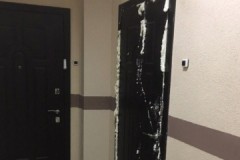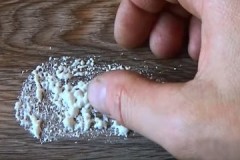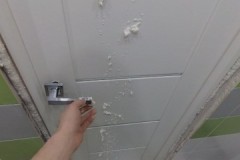Proven ways than to clean dried polyurethane foam from various surfaces
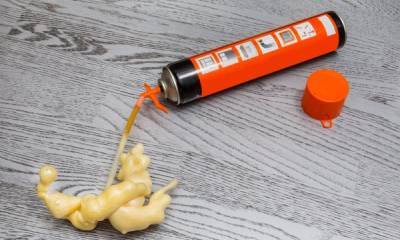 Polyurethane foam sealant (popularly, polyurethane foam) is a professional tool, the use of which significantly increases the sound and heat insulation properties of the treated surface, helps to reliably fasten individual structural elements.
Polyurethane foam sealant (popularly, polyurethane foam) is a professional tool, the use of which significantly increases the sound and heat insulation properties of the treated surface, helps to reliably fasten individual structural elements.
After application, the airy foam transforms into a dense mass in a matter of minutes, which is very difficult to clean.
Only with the correct selection of products, it is possible to solve the problem of dried sealant stains. Read about how to clean dried polyurethane foam from various surfaces in the article.
Content
How to remove with improvised means?
Regardless of which product is chosen to remove traces of polyurethane foam, the surface cleaning process takes place in the following sequence:
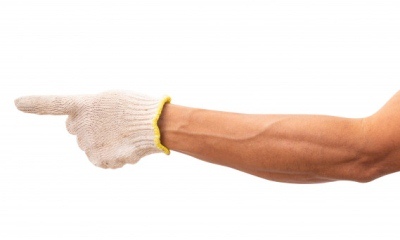 With a sharp construction blade, the frozen mass is cut from the surface to the maximum. It is important to ensure that the blade only hits the polyurethane layer
With a sharp construction blade, the frozen mass is cut from the surface to the maximum. It is important to ensure that the blade only hits the polyurethane layer- The remaining very thin layer of polyurethane foam sealant is treated with the selected composition. First of all, they use the most sparing available means.
- After fifteen to twenty minutes, the softened layer is cleaned off with the hard side of the dishwashing sponge.
Instead of a sponge, you can use a piece of rubber or a stationery eraser.
How to wash off old sealant with Dimexide?
A popular pharmacy drug with anti-inflammatory action - Dimexide, has established itself as an effective remedy in the fight against frozen polyurethane foam.
Do not use Dimexide on a foam sponge (pharmacy product corrodes foam rubber). It is possible to work with Dimexide only with rubber gloves (there are high risks of chemical burns to the skin).
How to remove frozen polyurethane foam with Dimexidum, the video will tell you:
Sunflower oil
Gently, delicately clean the hardened foam from the skin with the power of vegetable oil. The contamination is moistened with lukewarm oil (heated in a water bath), left for half an hourand then easily removed with a soft, damp sponge.
A preliminary procedure of steaming hands in hot water will speed up the process of removing the polyurethane foam sealant.
Table vinegar
Vinegar will help to clean plastic, metal surfaces from dried polyurethane foam. Contamination is abundantly moistened with a solution of vinegar and water (mixed in a 1: 1 ratio) and leave to soak for twenty to thirty minutes. Afterwards, the dirt is easily cleaned off with the hard side of the dishwashing sponge.
Pumice
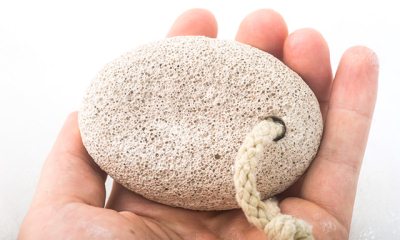 A proven product - pumice stone - will help clear your hands of frozen foam.
A proven product - pumice stone - will help clear your hands of frozen foam.
Dirty hands are immersed in warm water for thirty minutes, after which, having smeared the skin with a thick layer of cream, they begin to wipe the frozen foam with a pumice stone.
You need to act slowly, carefully... After the last piece of pumice has been removed, the hands are rinsed with warm water and coated with a nourishing protective cream.
How to remove with special chemistry?
In a situation where the first stage of cleaning hardened polyurethane foam with improvised means passed without result, it makes sense to use more aggressive, special cleaning compositions. TOP-3 most effective professional tools:
Cosmofen 5 cleaner
The leader among special professional teams. In one treatment, it will clean any surfaces from stubborn dirt:
- glue,
- oils,
- polyurethane foam.
In addition, Cosmofen 5 smoothes treated surfaces, removes scratches and abrasions. After processing, it leaves a protective layer on the surface that is resistant to ultraviolet rays.
The Cosmofen 5 cleaner does not burn, does not have a strong pronounced chemical odor. Average cost - 430 rubles. (1 liter bottle).
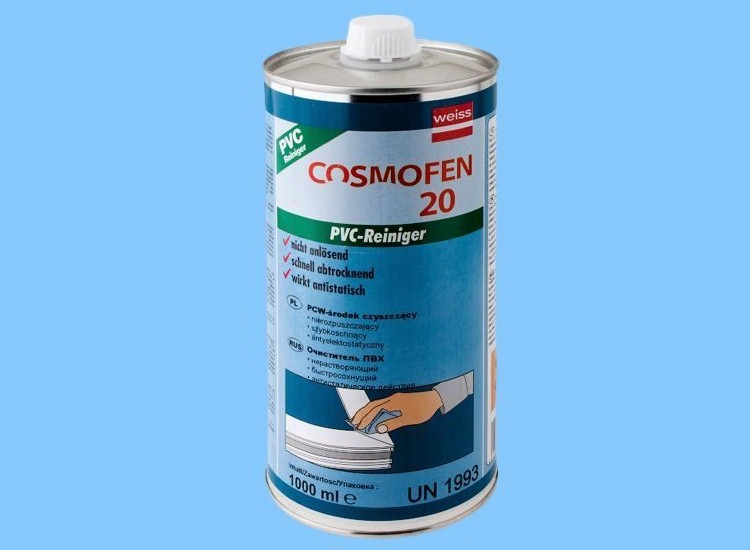
Mastertex Premium
Designed to remove particles of cured polyurethane sealant from any surfaces, incl. valves for cylinders and construction guns. Cleans, degreases and disinfects surfaces at the same time.
The method of application is simple: the balloon is shaken and sprayed onto the contaminated areas. After ten minutes, the remains of the polyurethane foam sealant are removed with a cloth. The average cost is 290 rubles. (500 ml bottle).
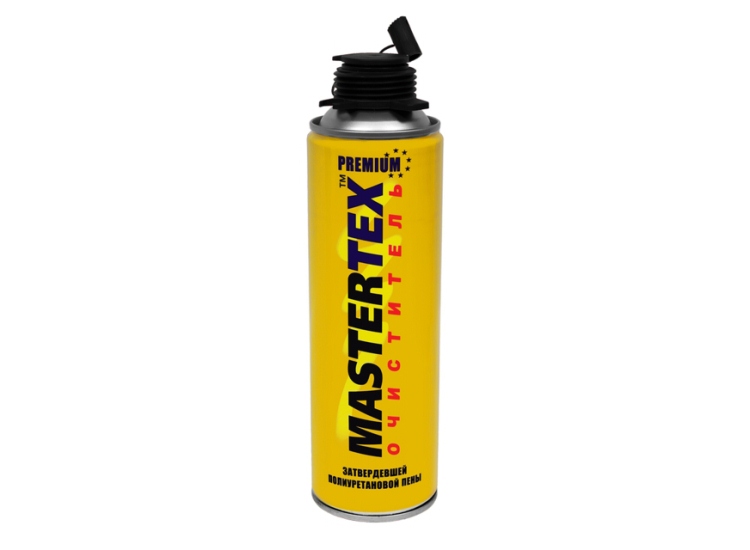
ATOLL
Designed for quick cleaning of the surface from the remains of hardened polyurethane foam. Ideal for cleaning:
- working tools and clothing,
- window and door frames.
After application does not leave marks and streaks (does not react with PVC and other plastics). It is enough to spray the product over the frozen foam, leave for ten minutes, and then wipe it with a damp sponge. The average cost is 150 rubles. (500 ml bottle).
So that after cleaning with special compounds the product does not finally lose its appearance, the selected product must be tested in advance on an inconspicuous, small area of the contaminated surface.
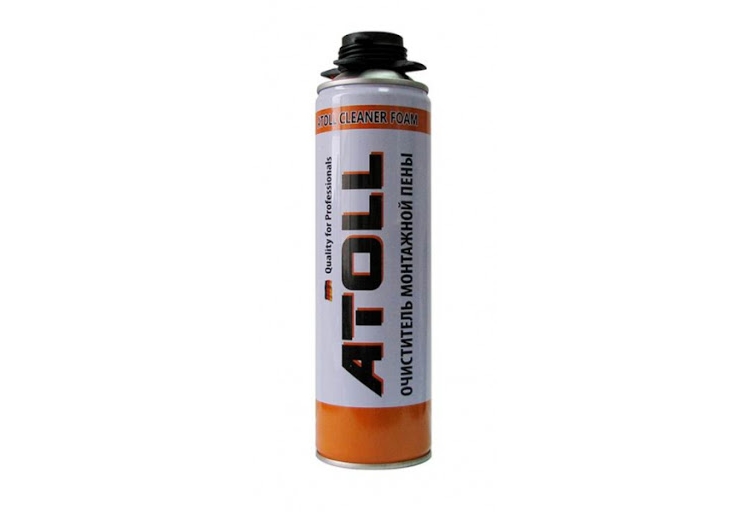
Work with professional chemicals is only possible in a well-ventilated area, in gloves and a respirator. Spray cleaning aerosols away from heating appliances and open flames.
What not to do and why?
There are several limitations to remember before starting the process of removing cured polyurethane foam.
Do not scrape off the hardened layer from surfaces with a knife or rub with abrasive powders (scratches and abrasions that remain in place of dried foam cannot be removed).
Do not apply solvents to varnished or painted surfaces. The result of such cleaning is whitish, worn gray hair, which is not possible to get rid of.
Do not use acetone-based compounds for cleaning iron doors. Reacting with the surface, the polyurethane foam penetrates even more into the thickness of the metal. Subsequently, under direct sunlight, the particles of the sealant appear on the iron surface in the form of yellow, indelible spots.
Advice
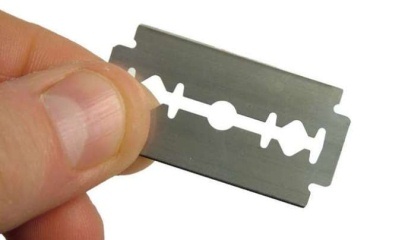 A layer of cured foam from the glass will help remove the sharp blade... Carefully, trying not to press hard on the glass, layer after layer of the hardened sealant is simply cut off the smooth glass surface.
A layer of cured foam from the glass will help remove the sharp blade... Carefully, trying not to press hard on the glass, layer after layer of the hardened sealant is simply cut off the smooth glass surface.
If foam gets on your clothes, you need to wait until it dries and only after that you can start cleaning. By smearing fresh traces on clothes, you can achieve only one thing - the sealant will be absorbed into the fibers of the fabric, and it will be impossible to remove it.
Freezing is a good way to remove cured building foam. Place the contaminated clothing in the freezer for at least twelve hours. Frozen sealant loses its density, making it easy to clean with a stiff brush or scraper.
The easiest way to remove traces of foam from a wooden surface is to sand it... The sealant is cut off to the maximum with a sharp knife, the rest is cleaned with emery. The cleaned surface is recoated with varnish or paint.
You will find useful tips and advice on how to remove polyurethane foam from various surfaces and objects here.
Conclusion
Clearing hardened foam is a laborious task. But with very little perseverance and patience, using proven methods and means, you can achieve the desired result - a clean surface without traces of polyurethane foam sealant.

